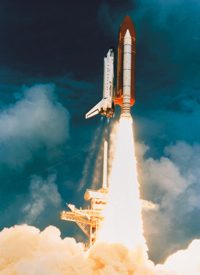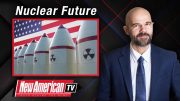
Six weeks after the release of the committee’s preliminary report, the U.S. Human Space Flight Plans Committee has released its final report. The 155 page report, which is entitled “Seeking a Human Spaceflight Program Worthy of a Great Nation,” is the end result of a process which began last May, when the Obama administration announced that the committee, chaired by Norman Augustine (former CEO of Lockheed Martin), would study the state of America’s manned space program and render advice to the administration concerning the future of that program.
The committee’s Summary Report was submitted to NASA and John Holdren (the Obama administration’s controversial “science czar”) on September 8. The release of the Summary Report immediately raised questions of the continued viability of the manned space program, as it is presently configured. Almost all of the central recommendations made by the committee — including possible budget increases, international cooperation, and at least partial privatization — seemed almost calculated to cause discomfort among the various elements within the aerospace industry, NASA, and in the broader circles of space-related industries and advocacy groups.
The final report (which is available online) is only likely to further fuel the various controversies. According to CBSNews.com, the committee is recommending a fundamental reordering of the space agency’s destination priorities:
NASA needs to make a major detour on its grand plans to return astronauts to the moon, a special independent U.S. panel has told the White House.
NASA has picked the wrong destination with the wrong rocket, the panel’s chairman said Thursday. A test-flight version of the new rocket, Ares, is on a launch pad at Cape Canaveral, awaiting liftoff later this month. The National Aeronautics and Space Administration should be concentrating on bigger rockets, the panel members said.
Norman Augustine, chairman of the White House-appointed panel reviewing the agency’s spaceflight plans, said it makes more sense to land on a nearby asteroid or one of the moons of Mars. He said that could be done sooner than returning to the moon in 15 years as NASA has outlined.
Testimony before the committee had criticized NASA for being constituency rather than destination driven; in other words, the critique was that NASA seemed to have a greater commitment to preserving its programs than to actually going somewhere. But the committee took this critique back a further step, and in the report’s “Concluding Observations,” the committee advised asking why the United States should go into space in the first place, before asking where the program should be going:
Planning a human spaceflight program should start with agreement about the goals to be accomplished by that program — that is, agreement about its raison d’être, not about which object in space to visit. Too often in the past, planning the human spaceflight program has begun with “where” rather than “why.” This is undoubtedly at least in part attributable to the fact that many of the benefits of human spaceflight are intangible (e.g., the positive impact the Apollo 11 landing had during a time of great tribulation for America). But this makes such intangible benefits and activities no less significant — witness the importance assigned to great literature, music and art in our nation’s history.
The committee’s “Concluding Observations” also reemphasized the Preliminary Report’s emphasis on the private sector, a position which NASA Administrator Charles Bolden has begun to embrace, albeit tentatively. In the words of the final report:
NASA’s relationship with the private sector requires particularly thoughtful attention. The two entities should not be in competition. NASA is generally at its best when innovating, creating and managing challenging new projects — not when its talents are devoted to more routine functions. Industry is generally at its best when it is developing, constructing and operating systems.
But now that the work of the Augustine Committee is concluded, where does the space program go from here? As CBSNews.com reports,
The key is where to explore space. In a report, the panel outlines eight options and leaves the choice to President Barack Obama. Three options are part of what the panel calls a "flexible path" to explore someplace other than the moon, eventually heading to a Mars landing far in the future. Augustine said the flexible path option, which includes no-landing flights around the moon and Mars, makes more sense from both a physics and finance standpoint.
Landing on the moon and then launching back to Earth takes a lot of fuel because of the moon’s gravity. Hauling fuel from Earth to the moon and then back costs money.
It would take less fuel to land and return from asteroids or comets that swing by Earth or even the Martian moons, Phobos and Deimos, Augustine said.



